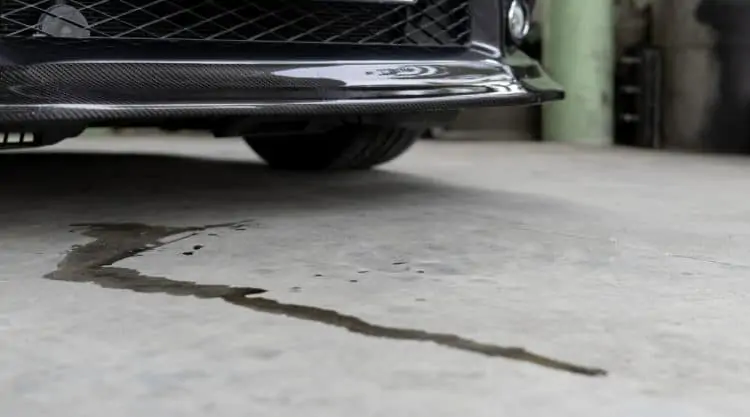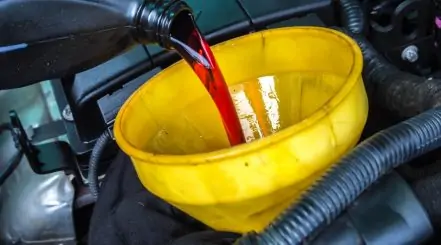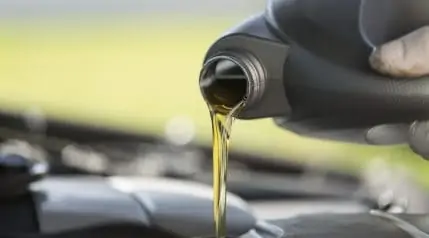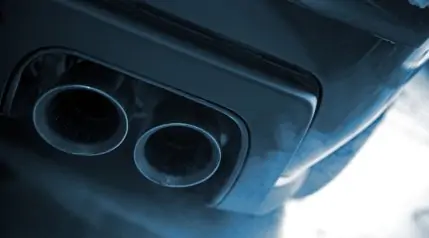
Overindulgence is, in most cases, a bad idea. Anything in excess can be harmful, and everything in moderation is best. Still, most of us will recover just fine from a few too many drinks or a tough session at the gym.
As a machine, however, the average automobile doesn’t have the same ability. Too much or too little of anything (coolant, washes, driving, etc) can cause serious damage to your vehicle.
The same holds true for the amount of oil you use. We all know that the consequences of using too little oil are grim, but using too much oil in a car engine could also spell ruin for its components and general performance.
In this article, we’ll tell you all about what happens if you put too much oil in your car. We’ll walk you through all the different symptoms that can crop up so you can identify them early, and you’ll also learn all about the different options you have to get your lubricant levels back to normal.
Key Takeaways
- How Much Is Too Much? – How much oil your car needs depends on the make and model of the vehicle. Find out more in our guide to how much oil to put in your car.
- Diagnosing an Overfill – If you have a leak, see blue exhaust smoke, have a wet spark plug well, smell burning oil, or notice poor engine performance, you may have overfilled.
- What to Do – If you have put in too much oil, you can drain the excess via the drain plug or oil filter, or use an extractor pump.
Contents (Jump to Topic)
Symptoms That a Car Is Overfilled With Oil
In this section, we’ll lay out some of the most common symptoms you need to keep an eye out for, ones that signal that you now potentially have an overfilled engine.
Some of these symptoms are non-specific. For example, an engine that runs loudly can have lots of potential causes, and that doesn’t necessarily mean that you’ve put excessive oil in your engine.
You also have to factor in the timing to make sense of what’s going on. If you’ve recently changed the oil, there’s a chance that too much lubricant could be the source.
There is a surefire way to know that your car is overfilled with engine oil, though. Take a peek under the hood and remove the dipstick. If you can’t see the fill line, there’s too much fluid in there.
Oil Leak
The extra lubricant could escape or be forced out during engine operation. Black puddles underneath your vehicle could be a warning sign.
These puddles are also a hazard to the environment, and driving around with your car in this condition could get you in trouble.
Note that leaks may also be caused by a loose oil pan gasket, so be sure to check this first.
Smoking Engine or Blue Exhaust Smoke
Smoke (such as white smoke) coming out of the engine compartment or exhaust pipe is another symptom. Escaping oil will burn if it gets into contact with heated parts, producing blue-tinged smoke.
As with puddles, these unnecessary emissions aren’t eco-friendly. In certain states, it’s illegal to drive a smoking automobile.
Burning Oil Smell
This usually occurs alongside a smoking tailpipe or engine compartment. You won’t be able to miss the trademark acrid stink of burning lubricant.
Poor Performance
If the overfill isn’t addressed after a while, your engine performance may be impacted. This is typically due to foaming.
Surplus lubricant can get agitated by the crankshaft and other moving engine components. This can only happen if the oil levels in your vehicle are too high.
Eventually, the viscous fluid will be transformed into a frothy foam, and the lightweight froth won’t be effective as a lubricant or a dispersant. It will also contribute to inconsistent levels of oil pressure.
Excess oil can also leak from the crankshaft into the combustion chamber, which will result in poor performance when the chamber’s hole is plugged with oil.
All of these factors can provoke the following performance-related issues:
- Noisy engine.
- Misfires or stalling.
- Trouble speeding up.
- Frequent engine overheating (check our article on cars overheating if you experience this).
- Difficulty getting the motor running.
What Happens If You Put Too Much Oil in Your Car Engine? When Is It a Problem?
A millimeter or two over the fill line shouldn’t be anything to panic over, especially if this only happens once in a blue moon. On the other hand, several inches above the fill line is something to worry about.
A quart (quarter of a gallon, or 2 pints) or more of unneeded motor oil in your car’s oil pan is a cause for concern. Here’s what could happen if you keep driving with an overfilled reservoir:
Clogged Catalytic Converter
When there’s an excess amount of oil circulating, it’ll go places it shouldn’t. One such example is your catalytic converter, where it will burn.
This component wasn’t designed to handle fluids. If it ends up clogged, your motor won’t run smoothly. After a certain point, your engine may even completely stop running. Catalytic converters don’t come cheap, and replacing them isn’t easy.
Dirty Spark Plugs
Oil leaking can foul up your spark plugs. If you’ve bought new ones, you may have to chalk them up to a wasted investment.
Engine Damage
Remember that oil can be turned into foam when there’s too much of it, which could cause damage. Frothy oil is just as bad as not having any at all. The foam can’t protect delicate mechanisms from friction damage.
Unstable Pressure
Foam has high quantities of air in it. As it circulates throughout your engine, it can destabilize oil pressure. As a result, valve pipes can collapse and rods can be bent. The unstable pressure will also cause your motor to work harder than it has to.
No Cooling or Cleaning
Other useful properties will also be affected if the consistency is foamy. The bubbly liquid won’t work as well to disperse contaminants or dissipate heat. Harmful corrosive substances can also build up in your engine. Sediment and debris will also build up, jamming up vital components.
Engine Failure
Foamy oil and the subsequent consequences can cause engine failure, which is certainly not something to be taken lightly. This is the worst-case scenario if you were to turn a blind eye to the symptoms we’ve covered so far.
What Can You Do When You’ve Overfilled Your Car with Oil?
So, you’ve established that there’s too much engine oil in your car, and it’s too late to go back in time and prevent that from happening. What can you do now?
The good news is that if you’ve caught it early, your car should be fine. Those of you with vehicles that are already showing signs of engine damage may not be so lucky, though.
If you fall into the second category, it’s advisable to take your car to a mechanic as soon as possible. The more time you spend sleeping on the situation, the more likely it is to become more difficult (and more costly) to deal with. The solutions below won’t help if certain components are already affected.
For those of you who caught this problem early on, there are three strategies to choose from.
You can perform a draining, you can use an extractor pump, or you can let your mechanic handle it. Let’s take a more detailed look at each of these 3 approaches now.
Drain Extra Oil
The car-savvy readers among you can attempt draining excess oil at home all on their own. By doing this, the goal is to return oil levels to normal without draining everything in the reservoir.
To do this, you’ll need the standard equipment:
- Safety glasses and gloves.
- Appropriate wrench for your drain plug.
- Jack and vehicle jack stands.
- Drainage pan.
- Make sure the engine is cool before you begin. If not, allow up to an hour or more for it to cool off.
- You may not be performing a full drain, but you can still get scalded. Put on your gloves and adjust your safety goggles. Jack your car up and place the jack stands so that it’s secure.
- Position the drainage pan underneath the drain plug/oil filter. Do so carefully — in case you lose control, you don’t want things to get messy.
- Here’s the difficult part: You’re going to gradually loosen your oil plug without removing it completely. To do so, use your wrench as carefully as possible — you don’t want lubricant to come gushing out. You’re aiming for a slow trickle. Monitor the flow carefully until you feel like the excess oil has drained out of the oil pan.
- Tighten your plug back up. Now, it’s time to check the oil dipstick to see if you can spot the fill line, or if you’ll have to try again.
Using an Oil Extractor Pump
If you have a well-equipped home garage, you may have an oil pump.
If you decide to go down this route to solve oil leaks from an overfill, you’ll also need these items:
- An old rag or towel.
- One clear container (preferably with measurements marked on it).
- Gloves (optional).
- Allow your engine time to cool off if you were driving. Warm oil is fine to work with, but it shouldn’t be boiling hot. Put your gloves on if you want to keep your hands from getting dirty.
- Pop the hood of your car and take out the dipstick. Place it on the rag or old towel to protect surrounding surfaces from stains.
- Set up your extractor as per manufacturer instructions. Connect it to a power source (e.g. your battery) and prepare the tubes and drainage container.
- Insert the extractor tube into the dipstick tube. Power up your machine and keep a close eye on the container. Once enough fluid has been removed, switch off the machine. You may want to check the fill line every so often to make sure you haven’t removed too much.
- Once you’ve checked the oil level and it has returned to normal, disconnect the extractor. Replace the dipstick, and you should be good to go.
Getting Professional Help
In some cases, it could be that your mechanic is the one responsible for overfilling engine oil. In these cases, the garage likely won’t charge you to remove excess oil.
Even if you were at fault for overfilling your car with fresh oil, you might still want to go to a mechanic to get the problem fixed. Perhaps you don’t own an extractor, maybe you’re worried about wasting lubricant by draining it, or perhaps you don’t want to deal with a mess at home. Either way, heading to a professional for help might be the best alternative for many people.
Wrapping It Up
If you’ve made it this far, you now understand what happens if you put too much oil in your car. Again, bear in mind that several ounces worth shouldn’t do any harm, especially when it only happens so infrequently. However, one or more quarts of oil could have major ramifications, especially if it happens too often.
All of the long-term effects of driving a car that’s overfilled with oil are serious. Insisting to push your vehicle’s engine to the limit can result in total failure, and will end up costing you loads of money and wasted time on repairs down the line.
Taking action early on will cost you less than an hour or a (relatively) small fee to your mechanic. Wait too long to address the situation, and you might have to shell out hundreds or even thousands of dollars for repairs.
If you accidentally have an engine oil overfill, don’t be too hard on yourself. It happens with even the best of us, and your sole focus right now should be fixing the problem as soon as possible. You also shouldn’t be discouraged from continuing to change your car’s oil on your own. We all make mistakes, even certified mechanics – we live, we learn!




